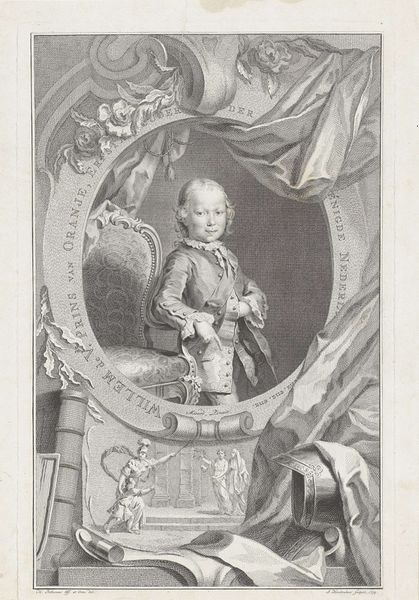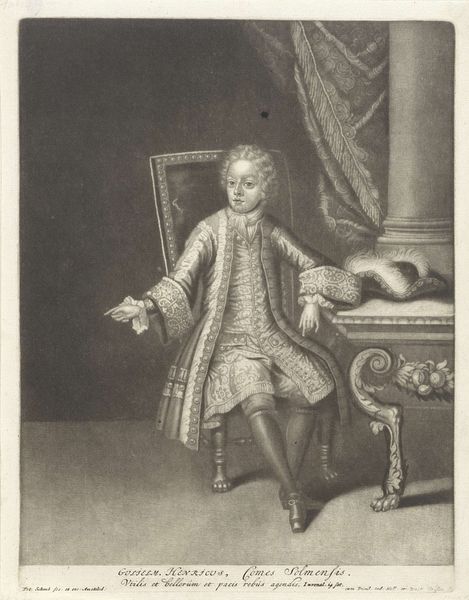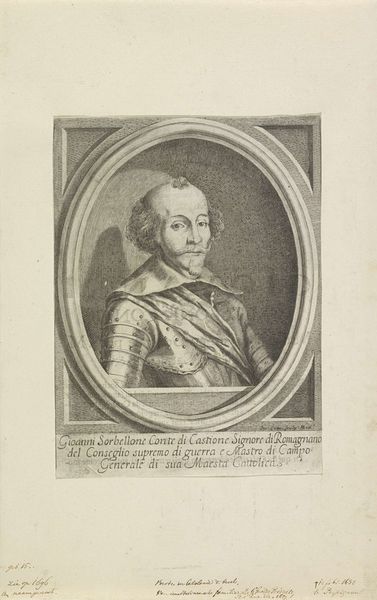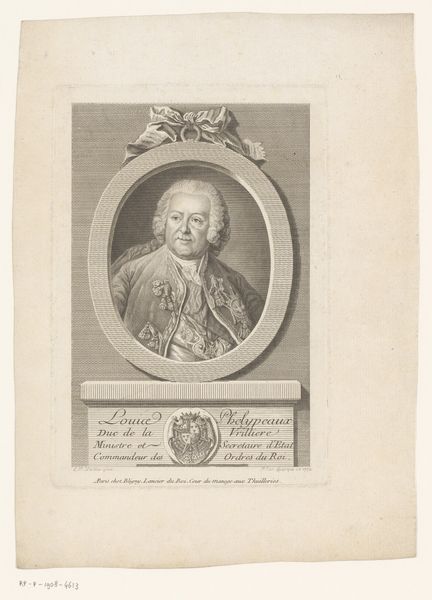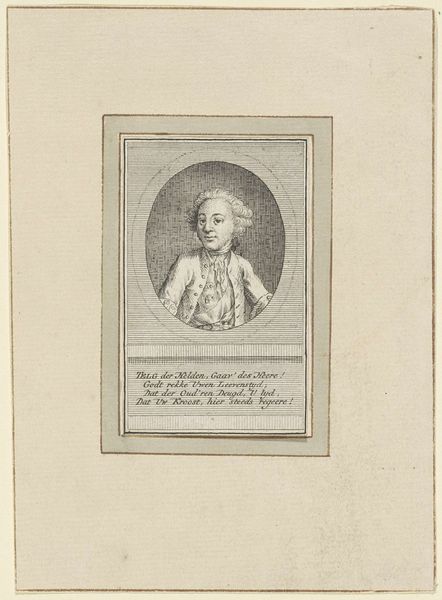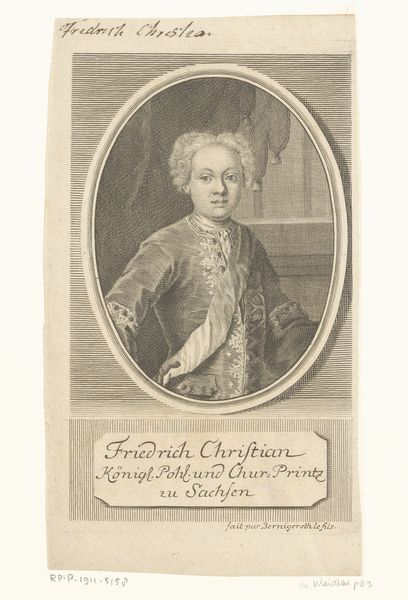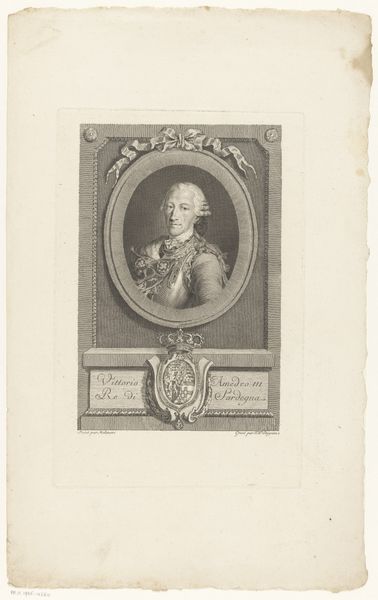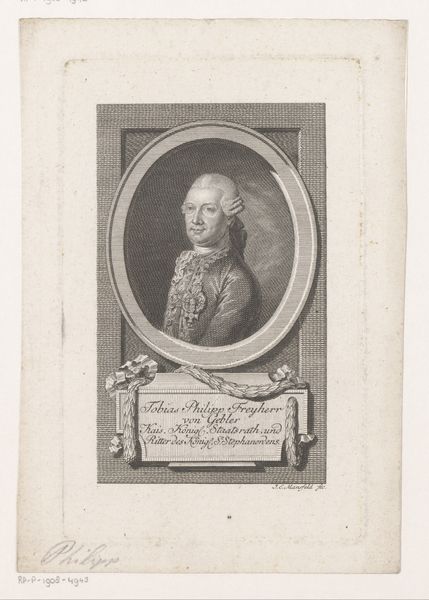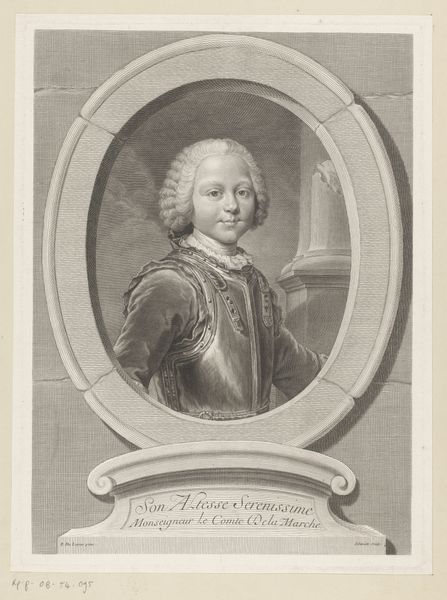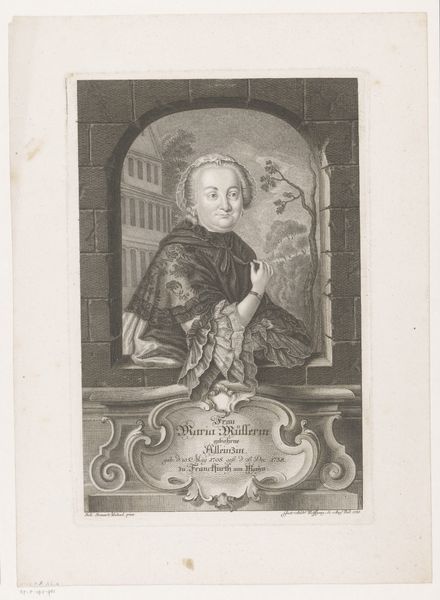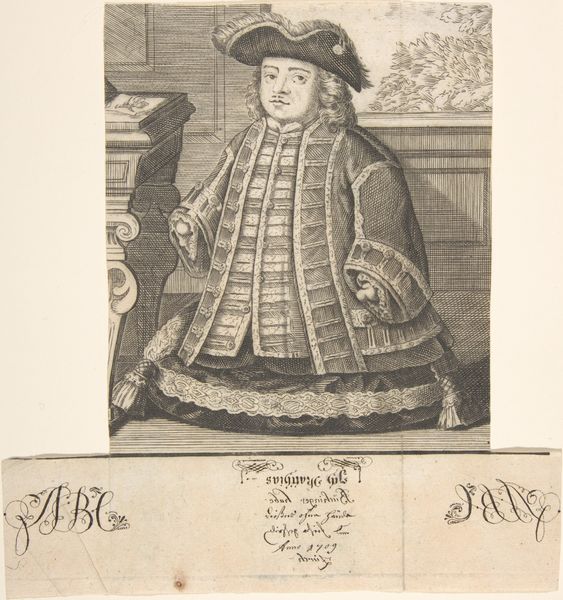
print, engraving
#
portrait
#
baroque
# print
#
genre-painting
#
history-painting
#
engraving
Dimensions: height 200 mm, width 123 mm
Copyright: Rijks Museum: Open Domain
Editor: Here we have a print from 1752, "Portret van Willem V op 4- jarige leeftijd," by Frans de Bakker. It’s a baroque engraving depicting a young boy in formal attire, holding what looks like a staff. The details are quite intricate, and it carries a strong sense of formality. How do you interpret this work, given its historical context? Curator: Well, consider that prints like these were crucial tools for constructing and disseminating power during the 18th century. It’s not just a portrait of a child; it's the carefully crafted image of a future ruler. Notice how Willem V is positioned, what symbols are included: his sash, the staff, even the elaborate frame surrounding him. All of these elements work together to legitimize his claim to power. It’s carefully manufactured propaganda meant to instill a sense of hope and stability in the populace. What does that suggest to you about the role of portraiture in solidifying political power? Editor: So it’s less about capturing a likeness and more about building an image? The boy himself almost seems secondary to the symbolism. I’m also thinking about the relationship between childhood and power, particularly in the context of monarchy. Curator: Precisely. This portrait uses the image of a child, an innocent, to reinforce the idea of divinely ordained rule, seemingly natural and pre-ordained. It presents him as inherently entitled to authority. Now think about the inscription at the bottom – do you think this work is aimed towards the higher social class of the period? Editor: Definitely. The Dutch inscription shows this print was aimed towards an educated, upper-class audience, not necessarily the common person. It presents a narrative of legitimacy and hope. Curator: Indeed, these visual and textual elements of propaganda serve to strengthen the notion that Willem’s family is uniquely fit to rule. Editor: That makes me look at the print in a completely new light. It’s more than just a portrait; it’s a strategic communication of power. Curator: Exactly. By understanding these images as constructed narratives, we gain insights into how power operates and perpetuates itself. It makes you wonder who the target audience was.
Comments
No comments
Be the first to comment and join the conversation on the ultimate creative platform.
